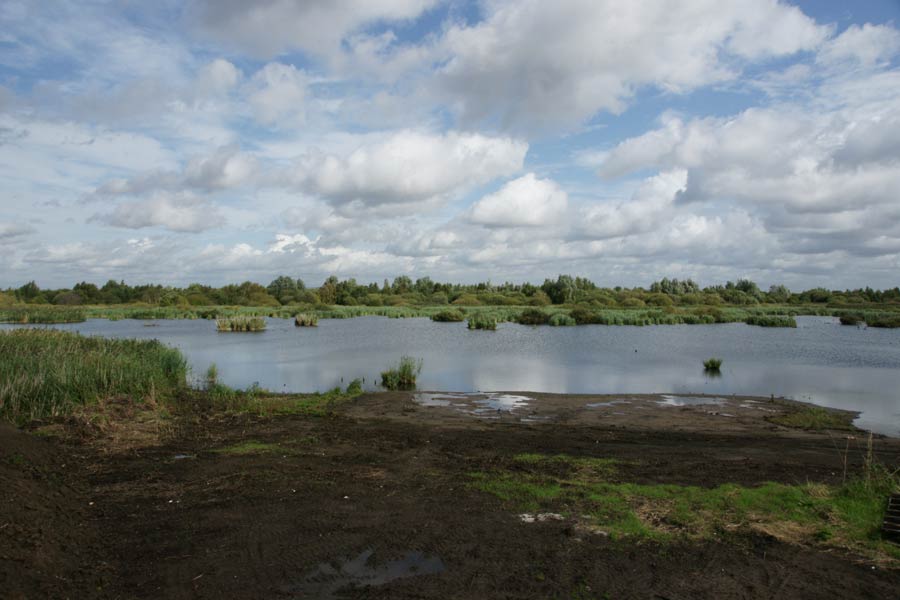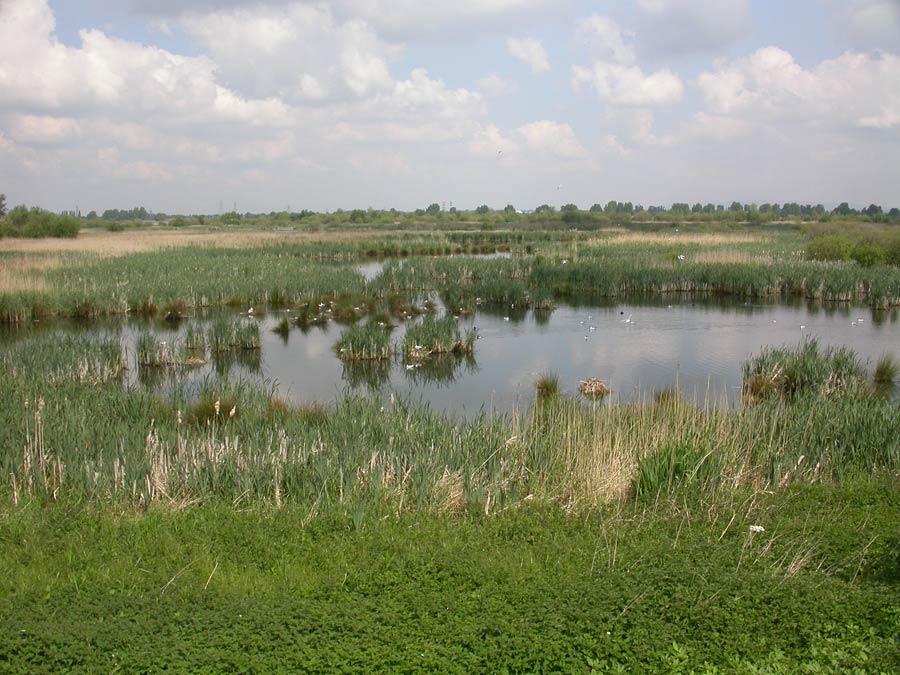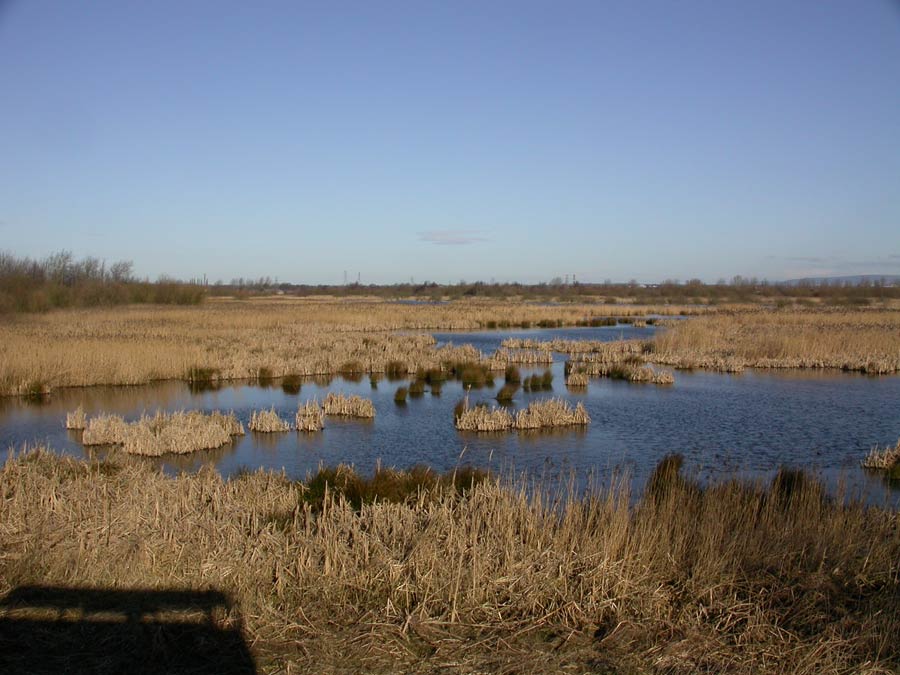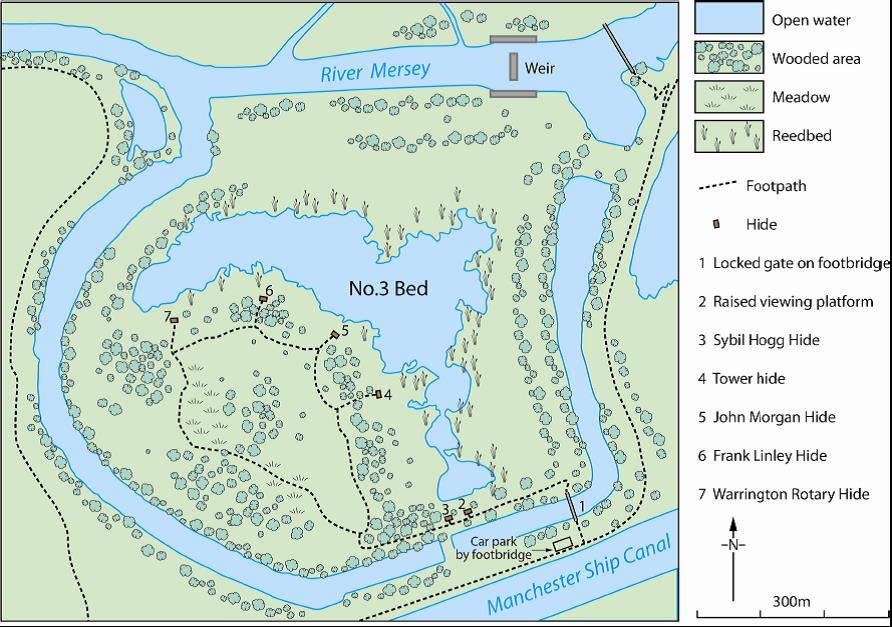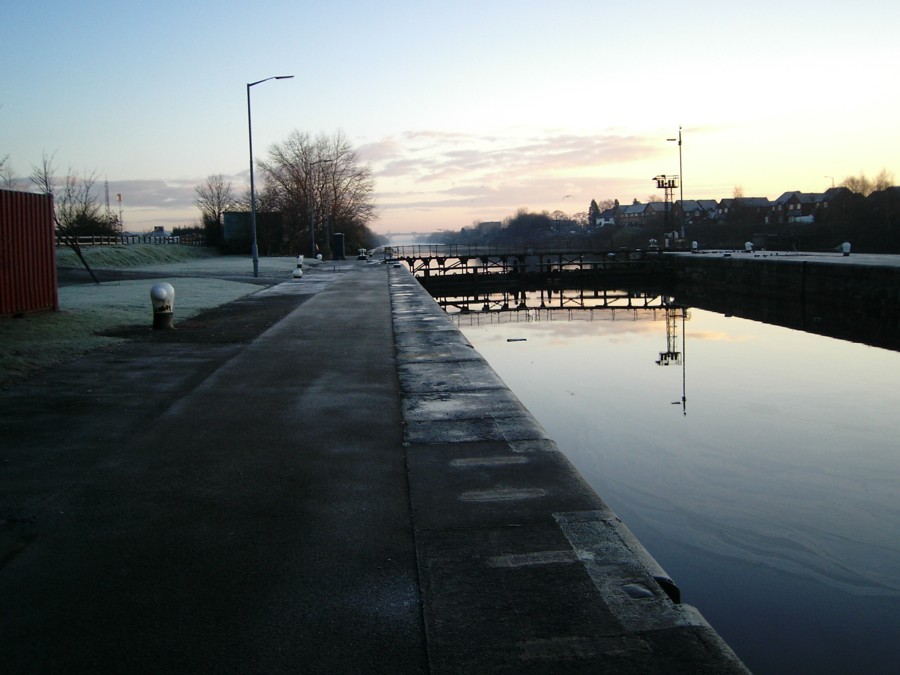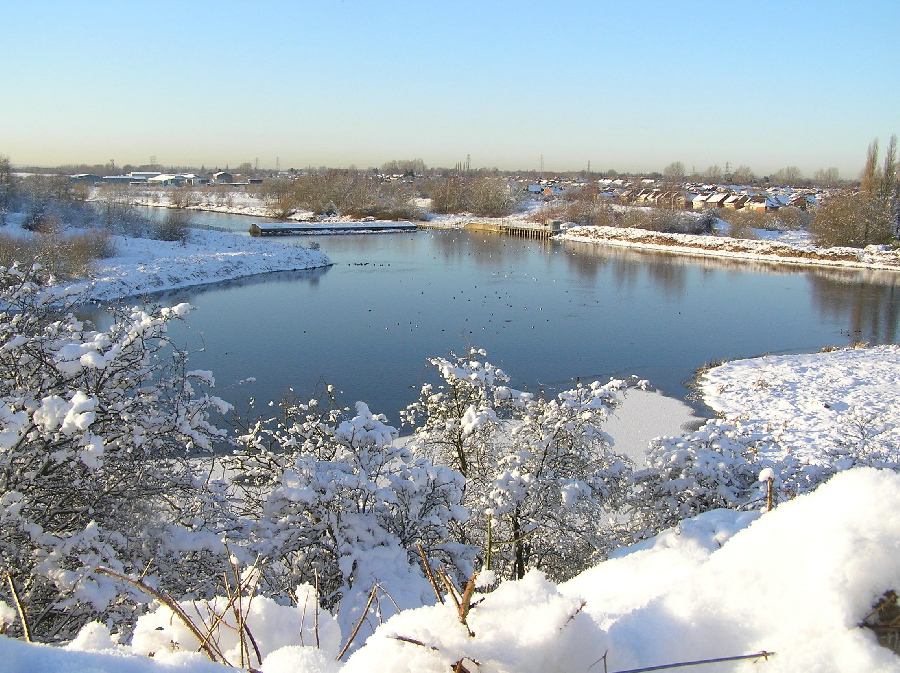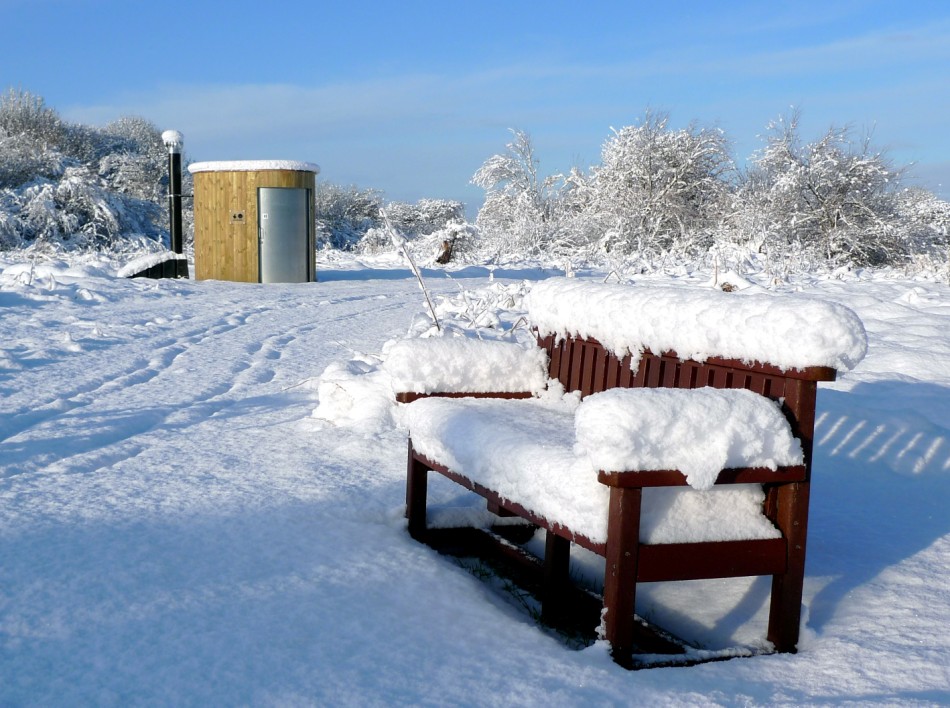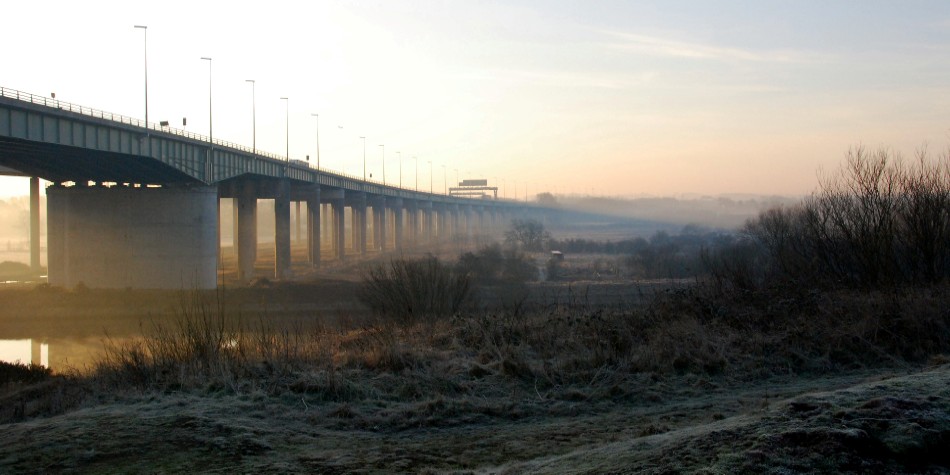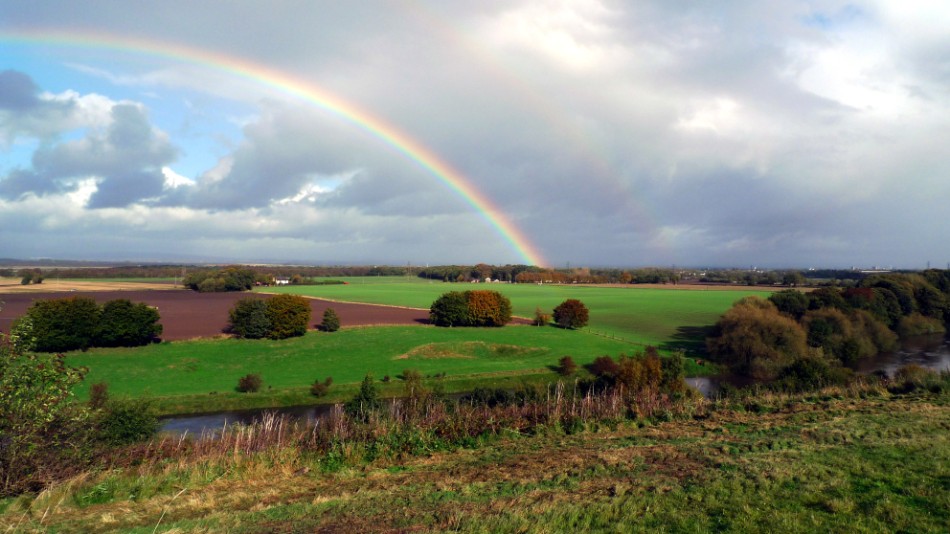Latest Sighting - 2025-12-16
Make a Donation
You can support Woolston Eyes Nature Reserve and conservation effort by making a donation.
Permit Holders Login
Habitat
The four beds at Woolston Deposit Grounds SSSI, are managed as a nature reserve by the Woolston Eyes Conservation Group in agreement with Peel Holdings. Parts of the site are still in use to accommodate dredging from the Manchester Ship Canal.
No.1 bed which is to the east of the motorway (the Thelwall Viaduct) consists primarily of rough grassland and willow scrub. Sand extraction has created a number of reedy pools which attract small numbers of Snipe and wildfowl and also Little Ringed Plovers in summer. Many Swallows and Reed Bunting roost in the reeds. The bed also supports a good range of dragonflies, damselflies and butterflies. Unfortunately there is no permitted access to this bed at the present time.
No.2 bed is still used periodically for pumping dredgings from the Ship Canal. It is largely dry with some reeds and willow scrub, but when dredgings are being pumped on, can hold sufficient water on the north and north-east areas to attract waterfowl, notably Teal in winter. Increasingly, Giant Hogweed has colonised significant areas. making access to the centre of the bed difficult and dangerous. Many species of warblers breed in the summer, together with Reed Buntings and Willow Tits. Like No.1 bed, access is not allowed by the landowner although parts of the bed can be viewed from the public footpath to Woolston Weir on the west bank.
No.3 bed lies to the north of a meander of the river. About 20 years ago bunds were built across the river by Woolston Weir and below the south bank of No.3 bed creating a redundant arm known as the Oxbow. Kingfishers frequently fly beneath the footbridge on to No.3 bed. The east and north sides of the bed are shallowly flooded and contain extensive beds of phragmites reed, some Reedmace and othe aquatic vegetation. The remainder of the bed is covered with Reed Canary Grass, Rosebay Willowherb, Nettles and a number of Willow copses. Two wildflower meadows have been created to attract pollinators and a winter feed crop provides food for many species of finch and Reed Buntings. Much of the focus of WECG’s management work has taken place on this bed with extensive improvements to the wetland habitat in recent years.
No.4 bed, to the west of the Reserve, also lies between the river and the canal. The undisturbed areas of the bed have developed a dense cover of Willow scrub, Nettle and other rank vegetation. The WECG has leased the NW loop of the bed from the MSCCo and created a wetland with ponds, islands and scrapes. We also now have an agreement to develop the remainder of this bed to create a wetland of 200 acres in total.
All the beds are enclosed within steep embankments and consist of rough grassland and scrub. In places taller poplars and willow grow alongside the river whose banks are covered by hawthorn, elder, bramble. These banks are bird-rich at most times of year with late summer warbler flocks and early winter thrush flocks being particularly notable. The river and canal are both benefiting from the improvement in water quality. In winter substantial flocks of diving duck, including Tufted Ducks, Pochards, Goldeneyes, Goosanders and the occasional Scaup can be found. The rubbish tips at both ends of the reserve are now closed and have been capped. Both are attractive to winter feeding finches and thrushes.
Bird Species
Two hundred and forty-four species have been recorded on the Reserve, with a further sixteen escapes, including fifteen species of raptor, more than thirty species of wader, all five grebes, the three woodpeckers, and five species of owl. Click here for a full species list
Lying next to the Mersey, the flooded beds attract large numbers of dabbling ducks moving inland from the estuary. The Mersey Valley Pochard flock also spends time here making it an excellent place to see winter wildfowl. A thousand or more Teal are present, sometimes several times this figure, with several hundred Mallard, a hundred or so Shoveller, Gadwall and Tufted Duck. Small numbers of Pintail and Wigeon are also a regular feature. Other species of wildfowl occur less frequently or in smaller numbers, and scarce or rare species such as Ring-necked Duck, Ferruginous and Long-tailed Duck, Green Winged Teal, Common Scoter and Smew have been recorded. In late autumn and winter skeins of Pink-footed Geese are often observed making hard weather movements to the east coast.
The water margins of No.3 bed are an excellent nesting habitat for Black-necked, Great Crested and Little Grebes plus Teal, Shoveller, Mallard, Pochard, Gadwall and Tufted Ducks. Garganey bred in 2019, the first time a brood of Garganey has been seen in Cheshire since 1960. A substantial Black-headed Gull colony dominates the water margins of No.3 bed.
The Eyes is particularly important, in a county context, for its breeding populations of common warblers. Regular counts of singing males during the breeding season identify significant numbers of Sedge Warblers, Whitethroats, Willow Warblers, Chiffchaffs, Blackcaps, Reed Warblers, plus small numbers of Grasshopper Warblers, Lesser Whitethroats, Garden Warblers and Cetti’s Warblers. In the damper areas upto 100 Reed Bunting are present in summer.
Large flocks of aerial feeders may be present from May to September, with many hundreds of Swifts joining the swirling flocks of hirundines feeding over the insect-rich lagoons. In most years there is a sizeable Swallow roost, which has on occasions numbered up to 20,000 birds. Inevitably, a Hobby is often in attendance and provides some spectacular aerial performances. From October to early winter thousands of Redwing and other thrushes arrive to feed on the hawthorn berries around the banks of the beds, while Starling numbers can be spectacular, as in 2014/2015 when up to 400,000 roosted on No.3 bed.
In winter, Thrush roosts dwindle as food supplies diminish. Finches, Goldfinches and Chaffinches flock to feed on the winter feed crop and on the drier parts of the muddy beds, with Siskins and Bramblings regularly located amongst them. The best place to see Bramblings, however, is at the feeders by the Morgan Hide. A few Chiffchaffs remain in willow scrub during most winters and Firecrests occasionally winter alongside the more numerous Goldcrests.
Wader passage is much smaller than formerly due to changes in the pumping regime into the beds. Spring passage is typically light, although Common Sandpipers are seen regularly in late April and early May and on one occasion, stayed to breed. Little Ringed Plovers appear annually and breed most years. Autumn wader passage is heavier with increasing numbers of Black-tailed Godwit and Green Sandpipers. Snipe, Jack Snipe and Lapwing are also regularly present.
As far as rare or scarce birds are concerned, Woolston offers much opportunity for the discovery of that ever-elusive rarity. Over forty years of observation spread over Woolston’s huge acreage have produced some exciting birds including: Storm and Leach’s Petrels, Spoonbill, Bittern, Ring-necked and Ferruginous Ducks, Quail, Honey and Rough-legged Buzzards, Red Kite, Osprey. Montague’s Harrier, Temminck’s Stint, White-rumped, Pectoral and Buff-breasted Sandpipers, Red-necked and Wilson’s Phalaropes, Avocet, Great and Artic Skuas, Laughing, Mediterranean and Ring-billed Gulls, Whiskered and White-winged Black Terns, Bee-eater, Nightjar, Golden Oriole, Bluethroat, Blyth’s Reed Warbler, Yellow-browed Warbler, Great Grey Shrike, Marsh Warbler, Firecrest and White-crowned Sparrow.
Ringing
Over 168,000 birds have been ringed at Woolston since ringing first started here in 1980. A small team now operates on beds 1 and 3 throughout the year, ringing up to 7,000 birds annually. In most years Woolston has taken part in an international ringing programme aimed at studying those migratory species which winter in Africa. During the summer and early autumn large numbers of common warblers are ringed with full biometrics taken as part of that research programme. In the latter part of the year, the focus is on tape-luring overflying finches, buntings and wagtails.
At any time there is the chance of the odd surprise with Marsh Warbler, Bluethroat, Nightingale and Firecrest among the scarcer species ringed while a White Crowned Sparrow, native to the West coast of the USA turned up in a net on No.3 bed in April 2016. During the winter months duck trapping takes place on No.3 bed where nationally important numbers of Teal have been ringed.
Other Interesting Species
Woolston is not only excellent for birds but for many other animals which have been recorded.
Nineteen mammalian species have been noted from Fox, Stoat, Weasel, Mink, Otter, Roe Deer and Badger to the small mammals which make up the diet of many predators on the Reserve. These small mammals include Short-tailed Field, Bank and Water Voles, Common, Water and Pygmy Shrews and Woodmouse. Five species of Bat have also been seen, Long-eared, Daubenton’s, Noctule, Pipistrelle and Soprano Pipistrelle.
Reptiles and amphibians including the rare Great Crested Newt and, more recently, the Common Lizard have been discovered on the Reserve.
Over 241 species of Lepidoptera have been found within the Reserve boundaries including the rare migrant moth, White Point. Butterflies seen include unusual visitors such as Brimstone and Clouded Yellow as well as the more common Peacock, Small Tortoiseshell, Common Blue, Comma, Small and Large Skipper, Painted Lady, Meadow Brown, Gatekeeper, Orange Tip, Small Copper and many more. Recent additions to the list include White Letter Hairstreak, Dark Green Fritillary, Purple Hairstreak and Ringlet. Twenty-two species of Odonata, (fourteen have been proved to breed) have been recorded and most can be found on warm sunny days anywhere on the Reserve. Uncommon County species include Red-eyed Damselfly but such species as Southern and Brown Hawker, Azure, Blue-tailed, Emerald, Large Red and Common Blue Damselflies are more likely to be seen.


